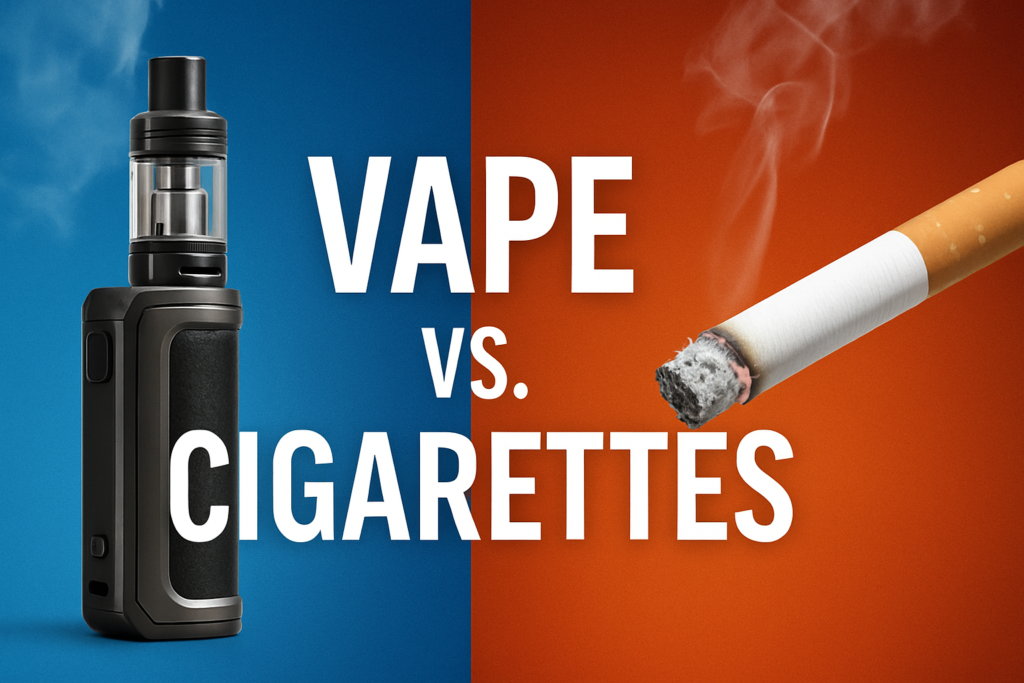The landscape of nicotine consumption has undergone a radical transformation in recent years. At the heart of this change lies the ongoing debate: vape vs. cigarettes. While both serve as conduits for nicotine delivery, their chemical compositions, methods of consumption, societal perceptions, and health implications diverge in significant ways. This blog post explores these differences through a semantic lens, drawing connections and contrasts that highlight the evolving nature of tobacco use.
Definitional Clarity: Cigarettes and Vapes
To frame the discussion, we must begin with definitions. Cigarettes, in their conventional form, are tightly rolled cylinders of tobacco leaves, wrapped in paper and lit at one end. The user inhales the smoke containing nicotine and a slew of other combustion by-products.
Vapes, or electronic cigarettes, are battery-powered devices that heat a liquid (commonly called e-liquid or vape juice) to create an aerosol. This vapor, often infused with nicotine, is inhaled in a process known as vaping.
The lexical relationship between “smoke” and “vapor” is critical here. While both are inhalable, smoke is a by-product of combustion, containing tar and carbon monoxide. Vapor, on the other hand, is a product of heating without burning, which ostensibly reduces the presence of toxic by-products.
Chemical Composition and Exposure
The semantic contrast between “burning” and “heating” leads us into the domain of chemical exposure. Cigarette smoke contains over 7,000 chemicals, with dozens classified as carcinogens. Terms like tar, carbon monoxide, and formaldehyde are commonly associated with smoking due to the combustion process.
In contrast, vapor from e-cigarettes typically contains nicotine, propylene glycol, vegetable glycerin, and flavorings. While the aerosol is not benign, the absence of combustion reduces the number and concentration of harmful constituents. This distinction gives rise to the term “harm reduction” in public health discussions, positioning vaping as a potentially safer alternative for current smokers.
Health Implications
Health effects are often discussed using relative qualifiers. Cigarettes are proven carcinogens, linked directly to lung cancer, heart disease, stroke, and chronic obstructive pulmonary disease (COPD). The lexical field surrounding cigarettes includes addiction, toxicity, and mortality.
Vaping, while not without risks, is enveloped in a more uncertain semantic space. Studies suggest it is less harmful than smoking but not harmless. The terminology includes phrases like potential risk, short-term effects, and longitudinal unknowns. Notably, vaping carries the risk of nicotine dependence, especially among adolescents, which has reignited public health concern.
Social Perception and Regulatory Semantics
The social lexicon surrounding cigarettes has shifted dramatically over the past few decades. Once glamorized, smoking is now stigmatized in many cultures, associated with poor health, pollution, and addiction.
Vaping occupies a more ambivalent semantic zone. It is often marketed using words like modern, clean, and customizable, which appeal to younger demographics. At the same time, phrases like gateway effect, flavor bans, and regulatory scrutiny reflect growing concern over its widespread adoption and potential for misuse.
Vape Kits: Bridging the Gap Between Smoking and Vaping
To further understand the practical differences between smoking and vaping, let’s explore some of the best vape kits available in the UAE. These devices exemplify the technological advancements in vaping and offer alternatives for those considering a switch from traditional cigarettes.
1. GEEKVAPE Aegis Legend 2
Why It’s Great: Perfect for beginners seeking both style and performance.
2. VOOPOO ARGUS Z VAPE KIT
Why It’s Great: Combines cutting-edge design with ease of use.
3. Geekvape B100 Aegis Boost Pro 2
Why It’s Great: Built for those who value durability and functionality.
4. Geekvape T200 (Aegis Touch) 200W Kit
Why It’s Great: A lightweight and beginner-friendly option.
5. VAPORESSO GEN 200 Kit With iTank 2
Why It’s Great: Perfect for advanced beginners looking to explore sub-ohm vaping.
6. VOOPOO ARGUS Z VAPE KIT
Why It’s Great: Versatile and easy to use, making it a favorite among new vapers.
Conclusion
In comparing vape vs. cigarettes, it is evident that while they share a core function—nicotine delivery—their lexical fields, semantic associations, and public health implications differ widely. Cigarettes are firmly rooted in the language of disease and death. Vaping, though linguistically positioned as a “cleaner” alternative, remains mired in debates over its safety, regulation, and social impact.
